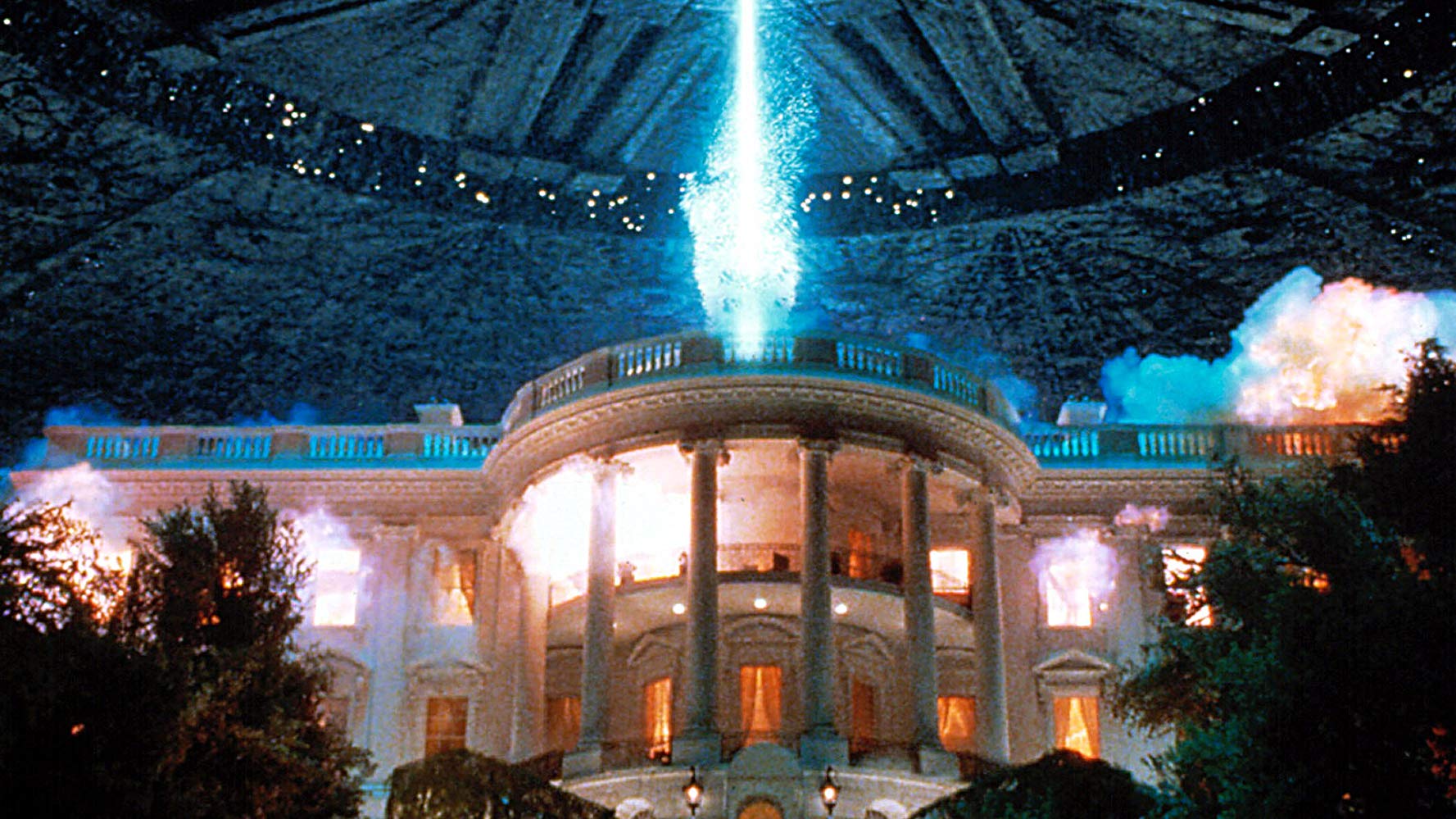
Independence Day is a 1996 film written by Dean Devlin and Roland Emmerich, and directed by Roland Emmerich. It follows a fighter pilot (played by Will Smith), a scientist (played by Jeff Goldblum), and the President of the United States (played by Bill Pullman) as they attempt to save the earth from a hostile alien threat. The film was a box office smash, and is still considered a staple in the blockbuster genre. Some fans even go so far as to watch it every July 4th. The casting is impeccable, the patriotic themes are comfortable and uplifting, and the special effects, which were revolutionary at the time, still (for the most part) hold up to modern day scrutiny.
Many have accurately claimed that Independence Day does not operate on anything resembling real-world logic. Its critics claim that the film does not allow for suspension of disbelief, and this means that the writing is bad. While I agree with the first part of the argument, I can’t support the second. Independence Day is not a work of subtlety or logic, but in terms of form, it is surprisingly well-written. More than the casting, the epic speeches, or the special effects, the screenplay is the true hero of the piece.
In this review, we will discuss the screenplay for Independence Day and how its expert use of the three-act structure led to a blockbuster of epic proportions.
Warning: This is a spoiler-heavy review. If you have not seen Independence Day, continue at your own risk.
What is a Three-Act Structure?
The three-act structure is the most popular form for modern day storytelling. Hollywood screenwriters almost always utilize some form of a three-act screenplay, which keeps their films succinct, on track, and easily digestible for mainstream audiences.
The three-act structure is defined by narrative tension. This tension is created through plot, as well as character motivation. The goal of the three-act structure is to resolve the hero’s wants and needs by solving an external conflict.
In Act One, the hero wants something, but their life is upended by some (usually) external force. They are given a goal and set out on a journey to achieve that goal.
In Act Two, the hero makes progress toward their goal. They encounter obstacles, and their goal takes on a broader scope. The stakes are raised. The hero is not able to defeat the external force, and they are brought low.
In Act Three, the quest has changed completely, and the hero must make a choice. This changes the focus of the narrative. They now fight for something personal. The character’s wants and needs are resolved. Utilizing the lessons they have learned throughout the journey, the hero is able to save the day.
Independence Day hits every one of these beats for each of the main characters with precision and focus.
Act One: The Alien Threat
President Thomas Whitmore is under fire from his supporters and his opponents. Though he was a respected fighter pilot during the war, he’s failed to show a fighting spirit since he took office. His young age, which was seen as a positive during his campaign, has been turned against him due to his timidity and willingness to compromise. As one news pundit says, “They elected a warrior, and they got a wimp.”
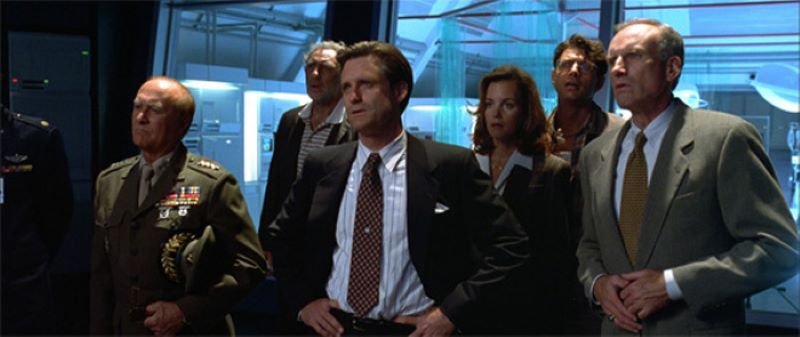
President Whitmore wants to be a good leader for the American people. He needs to find his strength of conviction again. Decisions regarding the alien invasion are met with hesitance until he learns that the aliens are hostile. He is locked in when he finally orders the evacuation of all threatened cities and leaves the White House.
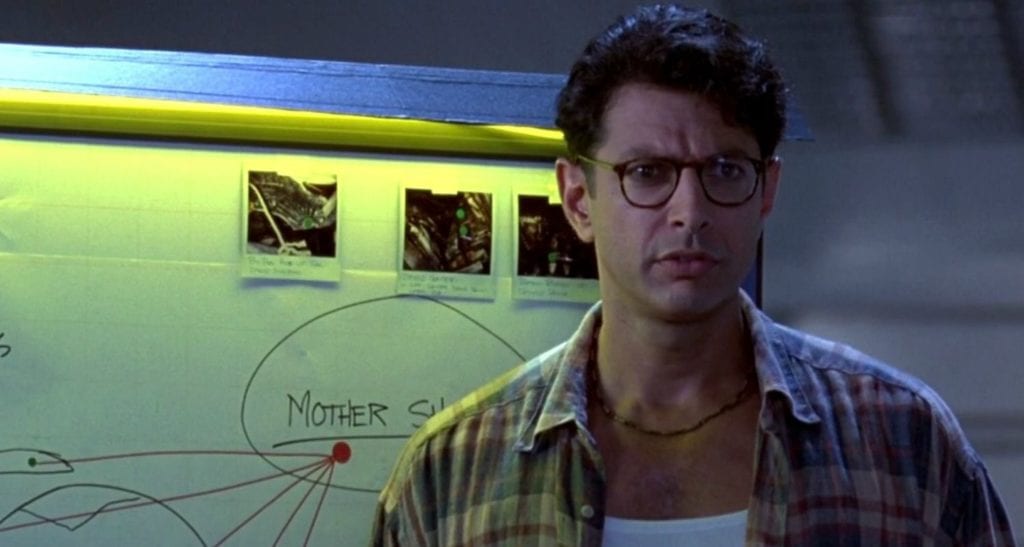
David Levinson is a scientist turned cable repairman. His divorce three years ago left him neurotic and pessimistic, overthinking everything and trusting no one; including himself. David is obsessed with green living and recycling. He wants to save the world, and needs to learn to have faith while trusting his instincts. David learns that a signal from the alien ships is actually a countdown: a countdown to annihilation. His quest is locked in when he chooses to go to the White House to reveal this information to the president.
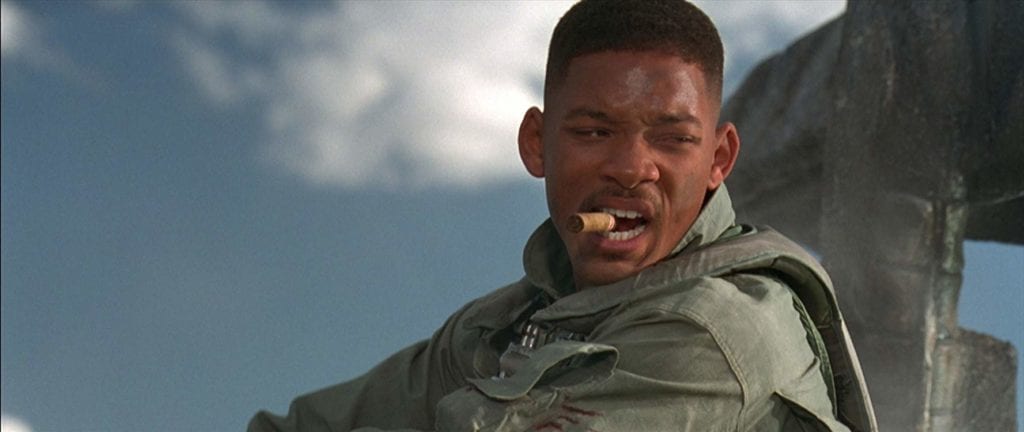
Captain Steve Hiller is a young, suave fighter pilot. He is saving up money to propose to his girlfriend, Jasmine; a single mother and exotic dancer. There’s a joke for every occasion, and his confidence is often confused for cockiness. The goal he aims for is to be promoted to the NASA space program. He needs to learn to have confidence in his own abilities and fight for what he believes in. Steve is sent on a mission to destroy the alien threat, and his best friend is killed in the ensuing dogfight. After some impressive maneuvering, Steve manages to down one of the alien vessels. His quest is locked in when he decides to drag the unconscious alien specimen to Area 51.
Act Two: Area 51
President Whitmore and his entourage, including David and his ex-wife, Constance, arrive at Area 51. They learn that the same alien species has visited the earth before. The team at Area 51 have been housing a felled alien spaceship and three dead alien specimens.
Steve arrives with the alien specimen, and they immediately take the creature to the lab to perform an autopsy. Things go terribly wrong when the creature rouses and attacks, resulting in the deaths of all the scientists present during the procedure. The alien communicates with the president, demanding to be released. Whitmore offers peace, but the alien declines and attacks Whitmore’s mind with telepathy. Through this brief link, the president learns that the alien plan is nothing short of extermination. The alien is put down, and Whitmore resolves to launch nuclear missiles at the alien ships.
Steve requests to return to his military base, El Toro, where he believes Jasmine is waiting for him. When he is informed that the El Toro military base has been destroyed, his resolution shifts to find out if Jasmine is still alive. He steals a helicopter and searches for her in the rubble of Los Angeles, finding her with a group of survivors – including the First Lady.
President Whitmore launches a major offensive against the alien invaders. He pauses for a few moments, but ultimately decides to launch the nukes. The missiles hit, but the attack proves ineffective against the alien shields. He aborts the mission. That night, following a bittersweet reunion, his wife dies of internal bleeding.
David confronts his ex-wife about her decision to leave him. They are still in love, but she can’t settle for the small, unremarkable life David has built for himself. Following the failed nuclear attack and the harsh rebuff from his ex-wife, David loses all hope and gets drunk. His father gives him a pep talk, encouraging him to have faith, and mentions that David should get up off of the floor so that he doesn’t “catch a cold”. This gives David an idea.
Act Three: Taking to the Skies
David’s plan is simple: Fly an alien spacecraft into space and dock with the Mother Ship. Give the Mother Ship a computer virus, which will disable the shields of every alien ship, then create an explosion within the Mother Ship as a distraction. During a window of just a few minutes, they will launch a coordinated, worldwide attack against the alien ships.
The Secretary of Defense is understandably skeptical about the plan, but Steve assures the group that he can maneuver the spaceship. President Whitmore is inspired by David and Steve, and he finally stands up for himself, firing the Secretary of Defense. He agrees to David’s plan and sets out to organize the counter-offensive. The plan requires a great deal of skill from Steve, courage from President Whitmore, and faith from David.
Sparks fly between David and Constance as she begs him not to go into space. David jokes that he finally has the chance to “save the planet.” He finally believes in himself and trusts that everything will turn out all right, even if it means he must sacrifice his life. His wants have aligned with his needs.
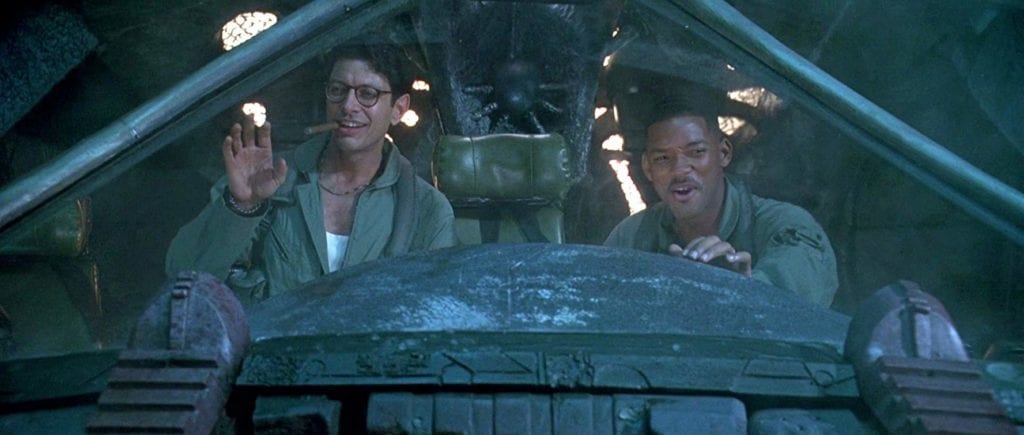
President Whitmore stands before a ragtag assembly of volunteer fighter pilots and gives an impassioned speech, inspiring his troops with a message of hope and unity. He then leads by example, opting to fight alongside his men. No longer hesitating, he says, “I’m a combat pilot. I belong in the air.” President Whitmore’s wants have aligned with his needs.
After apologizing to her for taking so long to propose, Steve marries Jasmine in an impromptu ceremony. He’s no longer afraid to stand up for himself and those he loves. He is self-assured, confident in his own abilities. As David and Steve cross the atmosphere and enter outer space, Steve looks out at the stars, tears in his eyes, and says, “I’ve been waiting for this my whole life.” His wants have aligned with his needs.
The attack hits a few speed bumps along the way, but in the end, the heroes are victorious. The Mother Ship and all of the smaller alien ships are destroyed. President Whitmore is hailed as a hero. David and Steve are reunited with their loved ones. Roll credits.
Narrative Satisfaction
So why does Independence Day work so well? Why do we abandon our common sense and bathe in the warm glow of heartwarming fluff? Why do we forgive insane plot contrivances and hackneyed dialogue? The answer is narrative satisfaction.
The structure of Independence Day is tight, well-organized, and easily digestible. Character arcs are set up early, revisited often, and paid off in rewarding ways. No stone goes unturned. No character goes unexplored. The plot is tied up neatly and effectively, and the audience leaves the theater feeling reinvigorated and hopeful.
Narrative structure is the unsung hero of many great screenplays, especially when it comes to summer blockbusters. More often, films are praised for their snappy dialogue, likeable characters, and themes. These are all important. Structure, however, is the skeleton that holds a screenplay together. Without it, no matter how great the message is, fun the dialogue is, or deep the themes are, the film is likely to meander and lose its core audience.
Happy Birthday America
This 4th of July, I invite you all to re-watch Independence Day and take time to appreciate the hard work that went into each epic moment. Every time the film tugs on your heart strings, ask yourself, “How did the screenplay prepare me for this?” When you see yourself in Captain Steve Hiller, or imagine how he feels in that culminating moment, awestruck, wrapped in a blanket of stars; ask yourself, “How did the screenplay earn this moment?” I promise, you won’t be disappointed.
To learn more about narrative structure and the three-act screenplay, please check out Lindsey Ellis’ fantastic video: How Three-Act Screenplays Work (and why it matters).



